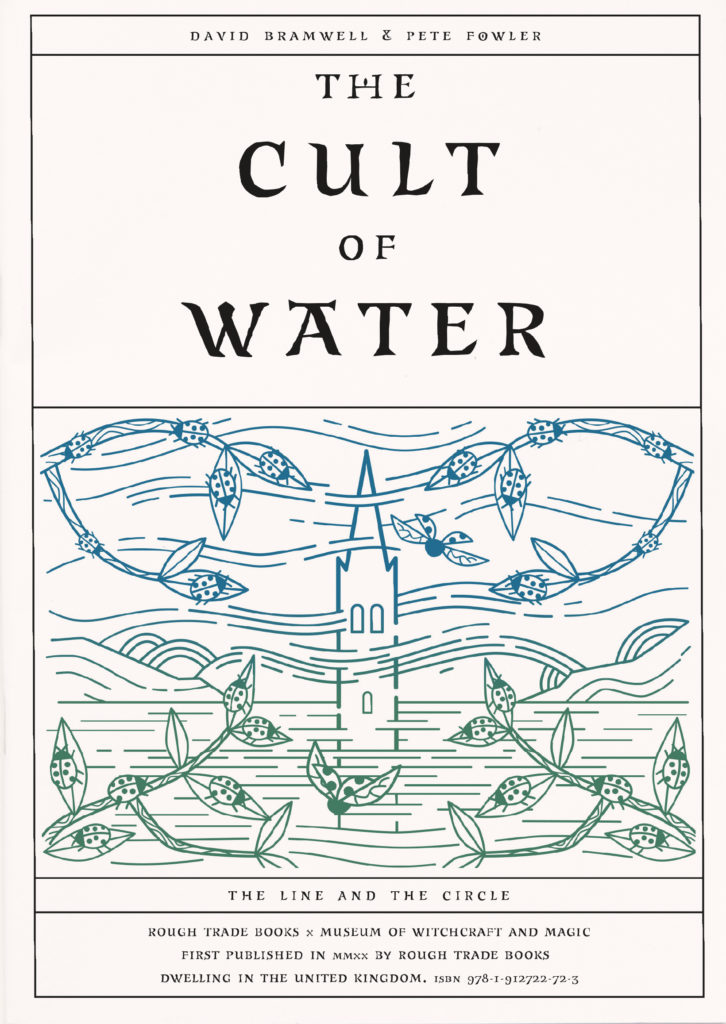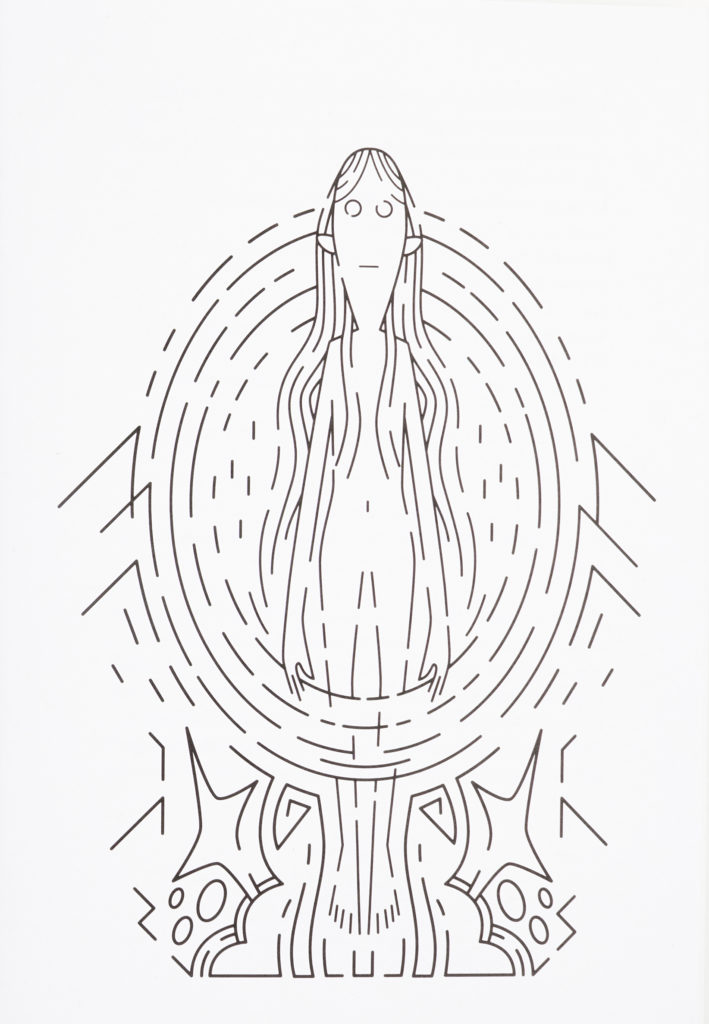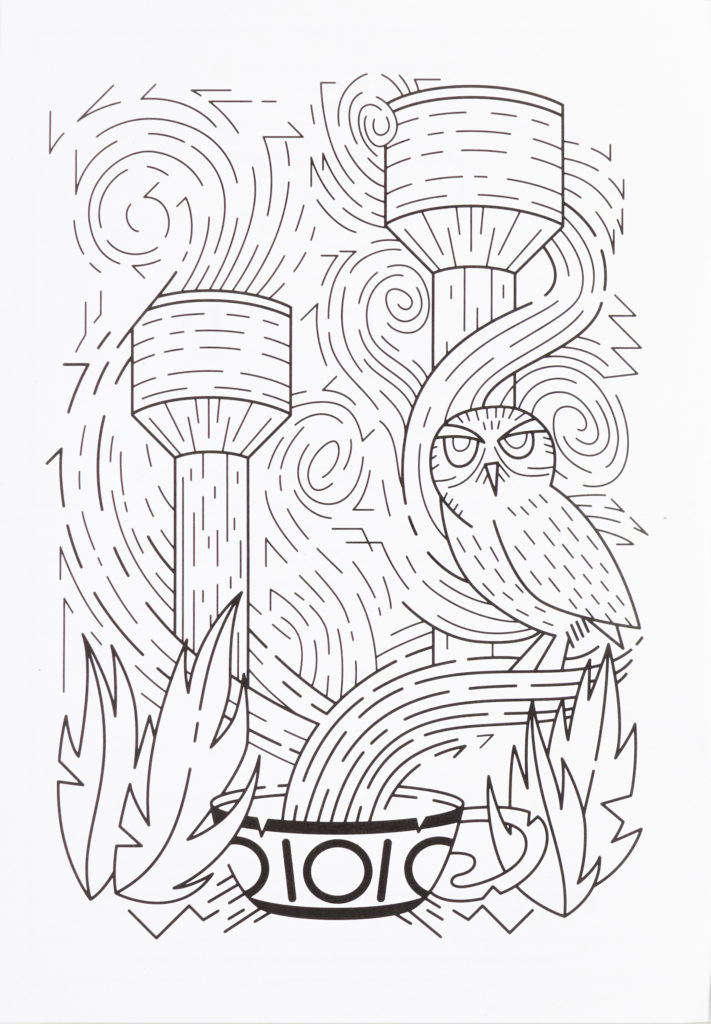A watery, witchy pamphlet with words by David Bramwell and illustrations by Pete Fowler, published by Rough Trade Books, and reviewed by Mathew Clayton.

In the middle of Newhaven is a small flyover. From the top you can see a 24-hour drive-through McDonalds, a budget party shop, and further afield, large heaps of aggregate. Stoke has pottery, Nottingham has lace – Newhaven has aggregate. Sold, stored and collected in 20 feet high piles spread throughout the town.
If you double back under the flyover, swing a left, you end up on Beach Road. Drive past the two used car lots, the burnt-out warehouse and park outside the sewage treatment works. Then follow the path up over the railway, across the muddy flat, wind through the neverending industrial estate and about ten minutes later you emerge at Tidemillls beach. A hundred yards to the west, a long concrete pier separates Tidemills from the ferry port – in the other direction the bay sweeps round until its hits the white cliffs of Seaford Head five miles away. The beach is often deserted but at low-ish tide a lovely stretch of sand emerges. It is the perfect place to go swimming. Often the only humans you can see are the fishermen who gather right at the end of the pier, their lines drooping in the water around them. At the weekend they sometimes camp on the beach, directly under the sign that forbids it. From my house it takes 30 mins to get into the water.
I have never swum regularly in the sea before, but this year it has been a lifesaver. And I am not alone: ten of thousands of people across the UK have reacted to Covid-19 by taking to the sea, the rivers and the lakes. The Cult of Water is a new pamphlet written by David Bramwell that traces our relationship with water. The essay revolves around a single event in Bramwell’s life. In 1976, when he was eight years old, he was taken on a family outing to Ladybower Reservoir in Derbyshire. The reservoir had been built in 1935 to provide water for Manchester and its surrounding towns. In its creation, two villages were flooded and their buildings destroyed. Well…all their buildings were destroyed bar one — the church at Derwent remained. When the reservoir dried up that hot summer the ghostly spire of the church rose from its watery grave. Bramwell, watching from the family’s Hillman Hunter, describes it as a ‘drowning god coming up for air.’

It symbolises Bramwell’s world view perfectly — one where the conventional (a family day out in the Hillman Hunter) exists happily side-by-side with the unconventional (Excalibur!). This duality, often held together by humour, is what gives his writing such strength. He sees no contradiction because that is essentially him — he has been both a much-loved primary school music teacher and a member of an ayahuasca cult that believed they were fighting a great war on the astral plane. In person he appears very respectable (he is often mistaken for Robert Macfarlane) but I remember one well-known author complaining, that whilst he was delightful company, they wished he would stop dragging them along to orgies. The tradition that he taps into is one best exemplified by the work of Ken Campbell — or from another perspective he is one part Ernie Morecombe, one part Alan Moore.

The Cult of the Water takes the reader on an enlightening and entertaining journey back and forth through time, encountering mythic and historical figures along the way. At various points he takes directions from real world people — a witch who runs a scented candle shop points out that he is really chasing Vulcan, the male Roman god of fire that sits on top of Sheffield town hall, in opposition to Danu, the female Celtic goddess of rivers. Danu gave her name to the Don, that turn gave its name to Doncaster the town Bramwell’s family moved to in 1976. He ends The Cult of Water by fittingly returning to to the Don…
Down by the sprawling shopping centre of Meadowhall,
On the outskirts of Sheffield, growing unnoticed by the
Banks of the Don are fig trees.
The Don’s waters once polluted and heated flowed with the sewage of Vulcan’s men.
But germinating in their digestive tracts and in those heated waters
were seeds from the fig biscuits favoured by the factory workers.
Now a fig forest
Sweet, delicious fruit.
A new Garden of Eden by the banks of the Don.
We have come full circle.
Cast your swords, coins, shields into the water boys, we still have far to go.
*
The Cult of Water is one of four pamphlets published by Rough Trade Books in collaboration with the Museum of Witchcraft and Magic. You can buy a copy here, peruse the others here, and read an interview with museum custodian Simon Costin here.